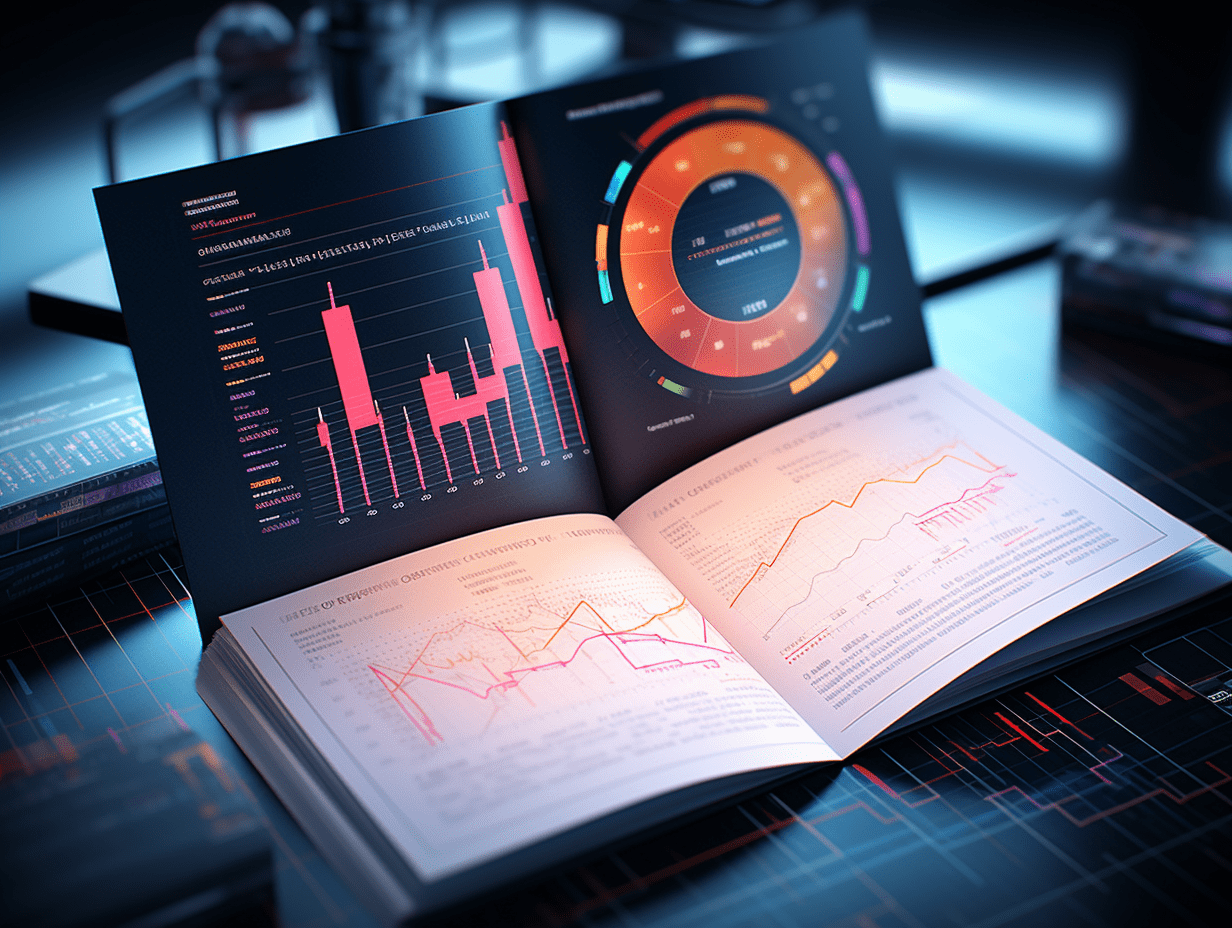
In the first half of the year, production reached an 11-year low. Can off-peak pricing drive profitability repair in the cement sector?
The time for mid-term disclosure has passed, and the cement industry, which is currently in a downturn, is still waiting for signs of recovery. As two major downstream sources of demand for the cement industry, the weak sales in the real estate market and the slowdown in infrastructure investment are putting pressure on overall cement demand.
Data shows that in the first half of the year, the cement industry experienced a "double decline in quantity and price". National cement production reached 850 million tons, a year-on-year decrease of 10.0%, the lowest level in the same period since 2012. During the same period, the national average price of cement was 367 yuan/ton, a year-on-year decrease of 12.8%.
However, looking at it quarterly, cement prices showed a trend of initial decline followed by recovery, with a slight increase in the average price of cement in Q2. It is understood that the second quarter is the traditional peak season for demand in the cement industry, coupled with the industry's proactive self-discipline and efforts to stagger production peaks, the national average price of cement in Q2 was 369 yuan, a 1.6% increase compared to the previous quarter.
Despite the industry's pressures, some cement companies are still achieving positive profits, showing good operational resilience. Additionally, the high growth of non-cement businesses and overseas businesses is adding a bright spot to the industry's fundamentals. Looking ahead to the second half of the year, can the market expect the cement industry to bottom out and recover?
Both revenue and net profit have dropped significantly, and capital expenditures have further decreased.
In the first half of 2024, the demand in the cement market continued to be weak, and the industry's overall operating conditions remained under pressure, which was reflected in the performance of all listed companies. According to data from the China State Construction Engineering Corporation Materials Association, the total profit of the cement industry in the first half of 2024 was -1.15 billion yuan, with more than 50% of companies experiencing losses.
Among 9 representative top cement companies, 8 saw a decrease in revenue in the first half of the year, with only Huaxin Cement (06655) achieving revenue growth, albeit in single digits. Net profits saw significant declines across the board, with Jiangxi Wannianqing Cement (000789.SZ) reporting a net profit of only 1.51 million yuan, and Tianshan Material (000877.SZ) and Tangshan Jidong Cement (000401.SZ) posting losses of 3.41 billion yuan and 810 million yuan, respectively.
In terms of capacity and sales volume, Anhui Conch Cement (00914) and Tianshan Material ranked highest in market share, with sales volumes of 126 million tons and 106 million tons, respectively, in the first half of the year. These figures represent a 3% and 13% decrease, respectively, compared to the same period last year. Following them are Tangshan Jidong Cement and Huaxin Cement, with sales volumes of 38 million tons and 28 million tons, respectively, marking a 13% and 5% decrease compared to the previous year.
Regarding the average selling price per ton of cement, most cement companies saw a decrease in the first half of the year, with Huaxin Cement and Tangshan Jidong Cement recording increases of 6 yuan and 4 yuan, respectively, due to higher overseas selling prices for Huaxin Cement and increased efforts to stagger production in the northeast region prompting a price recovery earlier.
Looking at the net profit per ton of cement, most companies saw a year-on-year decrease in the first half of the year, with Anhui Conch Cement, Guangdong Tapai Group (002233.SZ), and Ningxia Building Materials Group (600449.SH) reporting higher net profits per ton, at 29, 29, and 27 yuan respectively, representing decreases of 31, 35, and 14 yuan compared to the previous year. As a leading national enterprise, Anhui Conch Cement's cost advantage remains significant, with profits consistently higher than the industry average.
Against the backdrop of sustained profit pressures, most cement companies have continued to reduce their capital expenditures, resulting in a slight decrease in net cash flow. Anhui Conch Cement, Tianshan Material, and Huaxin Cement ranked at the top in terms of capital expenditure, with expenditures of 5.7, 4.7, and 1.4 billion yuan, respectively, representing a small year-on-year decrease.
Besides being used for cement clinker capacity replacement projects or acquisitions, numerous companies have been using their capital expenditures in recent years to expand into new businesses, markets, or to complete their industry chain layout, such as Anhui Conch Cement's expansion into aggregate, commercial concrete, and photovoltaic new energy businesses, and Huaxin Cement's establishment of overseas cement production capacities.
Despite the decline in operating cash flow for most cement companies, Anhui Conch Cement has seen an increase in operating cash flow against the trend, with a net cash flow of 6.9 billion yuan in the first half of the year, an increase of 1.8 billion yuan or 35% year-on-year.
Overall, although most companies faced significant operational pressures in the first half of the year, the recovery in cement prices in Q2, coupled with the industry's strengthened cost control and reduced capital expenditures, have led to a marginal easing of operating pressures for most cement companies. Furthermore, non-cement and overseas businesses are also expected to contribute new sources of performance growth.
Non-cement and overseas businesses may provide opportunities for recovery.
Despite overall operational pressures, cement companies have been actively seeking new paths in recent years, with non-cement and overseas businesses providing growth opportunities for the industry. For example, Huaxin Cement achieved rare revenue growth in the first half of the year, mainly due to the rapid growth of the company's overseas cement sales and its non-cement businesses such as aggregates and commercial concrete.
In the first half of 2024, Anhui Conch Cement and Huaxin Cement's non-cement businesses performed well, with Anhui Conch Cement seeing double-digit growth in aggregates and commercial concrete, with revenue increasing by 29.8% and 20.6% respectively, and production capacity increasing by 16.2% and 3%.3.9% is equal to three point nine percent.Starting from 2022, Anhui Conch Cement began to increase the production capacity of aggregates and ready-mixed concrete. By the end of 2023, the company's aggregate production capacity was 149 million tons, and the ready-mixed concrete capacity reached 39.8 million cubic meters. Based on the data from 2023, the gross profit margin of aggregates and machine-made sand reached as high as 48.32%, the highest among all products, indicating potential for significant profit. However, the revenue proportion of these two businesses is relatively small, with aggregate and ready-mixed concrete revenue accounting for only 6.4% and 3.5% respectively.
In comparison, Huaxin Cement's progress in aggregates and ready-mixed concrete business in 2024H1 was faster, with business income increasing by 37.0% and 24.2% respectively year-on-year, bringing the total income proportion to 42.5%, representing an increase of 8.8 percentage points.
The rise in overseas cement prices and sales volume also brought new performance growth for Huaxin Cement. In the first half of the year, the overall sales volume of cement clinker decreased by 4.9%, with a significant increase of 47.0% in overseas sales, offsetting the 15.7% domestic sales decline. The total revenue from overseas cement business was 3.578 billion yuan, a year-on-year increase of 55.41%, accounting for approximately 22.04% of the overall revenue, an increase of 7.5 percentage points compared to the previous year.
Another company with a presence in overseas markets is WESTCHINACEMENT (02233) listed on the Hong Kong Stock Exchange. In 2023, the company's overseas market revenue reached 2.77 billion yuan, a year-on-year increase of 145%, accounting for 31% of the total revenue proportion. Benefiting from investments in Ethiopia, Congo, and Mozambique, the company's average selling price and profit in Africa are higher than those of domestic factories. In 2023, the price per ton in Chinese factories was 292 yuan, while in African factories, it was 813 yuan; the gross profit per ton in Chinese factories was 44 yuan, compared to 504 yuan, 509 yuan, and 358 yuan in Ethiopia, Congo (Gold), and Mozambique respectively.
The staggered production reduction trend continues, and cement prices are expected to improve in the second half of the year
Despite the ongoing weak trend in the national cement market, the cement industry in the second half of the year is not lacking in multiple favorable factors from policies and the industry.
At the policy level, recently, the central bank, the China Banking Regulatory Commission, the China Securities Regulatory Commission, and other departments have released a series of policies to support the real estate market from both supply and demand ends, which is expected to provide a positive boost to the fundamentals of the building materials industry. Tianfeng released a research report mentioning that the prices of cement, fiberglass, and other building materials have slightly recovered, indicating that the bottom has likely been reached, and there may be opportunities for a rebound.
Since September, the Ministry of Ecology and Environment has successively issued documents covering the carbon emission trading market for cement, steel, and electrolytic aluminum industries, as well as guidelines for carbon emission accounting and reporting for enterprises in the cement industry. This signifies that the plan for the cement industry to be included in the carbon emission trading market in 2024 has been basically formed.
It is understood that the cement industry is a major emitter of carbon emissions, and the implementation of carbon trading and related policies is expected to drive the industry towards rational development, accelerating the elimination of outdated production capacity. Ping An Securities pointed out that as the industry is included in the national carbon emission and trading market, the cost advantages of leading companies like Huaxin and Conch, achieved through fuel substitution and technological upgrades in recent years, will be further consolidated.
At the industry level, recent efforts to increase industry self-discipline and staggered production restrictions have also supported cement prices. According to reports, leading cement companies in the Yangtze River Delta region plan to shut down for about 10 days in July and August, reducing production by around 30%; as a regional leader, Anhui Conch Cement will also join this round of staggered production cuts.
In the "Quality Improvement and Efficiency Increase for Return" action plan for 2024 recently released by Anhui Conch Cement, the company stated that it will actively promote the government to introduce more stringent production stagger policies and supply-side reform measures and strictly adhere to them based on the overall idea that profitability is the goal and market share is the foundation, in order to stabilize the basic earnings of the cement main industry.
However, the implementation of this round of staggered production restrictions still needs to be observed in the future. If the supply-demand relationship improves, cement companies may be able to offset the decline in demand through increased profitability per ton. In addition, as the peak season in the ninth and tenth months approaches, cement prices in various regions may also rise. According to reports, starting in September, major brand enterprises in regions including Hunan, Shaanxi, Hebei, Henan, Jiangsu, Zhejiang, Liaoning, Jilin, Heilongjiang, Sichuan, and Chongqing have already notified of an increase in cement prices.
Overall, the industry consensus on staggered production cuts can help support stable cement prices, and cement prices may see a degree of recovery in the second half of the year. On one hand, as capital expenditures decrease, the dividend nature of the cement sector remains prominent, and industry leaders with high dividend yields will have long-term investment value; on the other hand, cement companies performing well in non-cement businesses and overseas cement businesses may also benefit from positive catalysts.
RECOMMEND
©️2013 - 2024 GMT EIGHT Holdings. All Rights Reserved.
Contact: contact@gmteight.com


